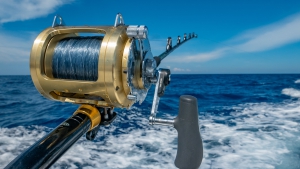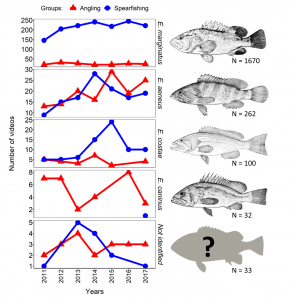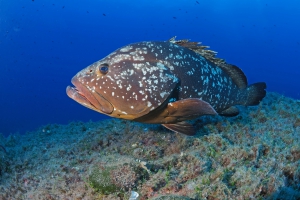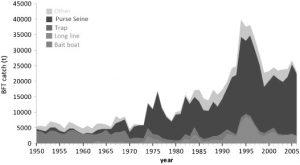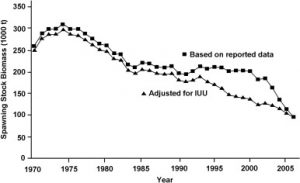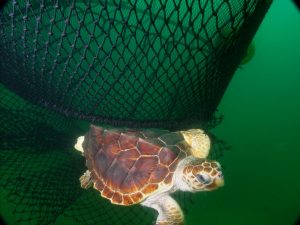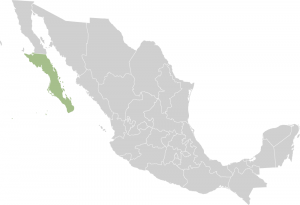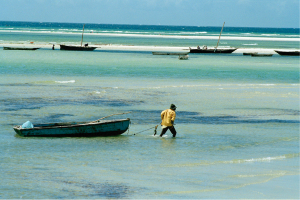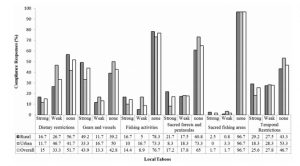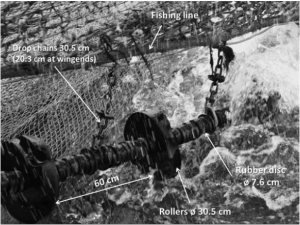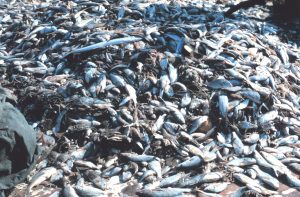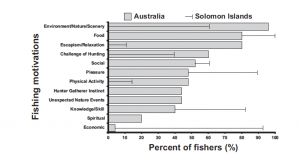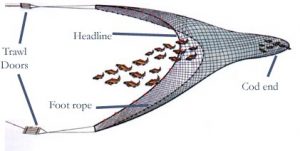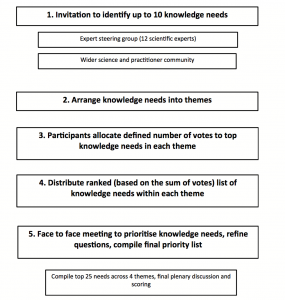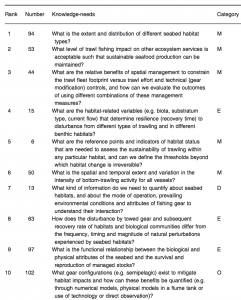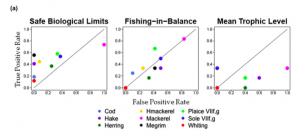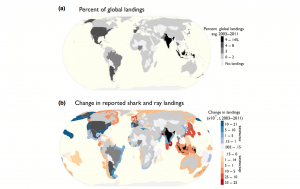By Casey Dresbach, SRC intern
In the last half of the century alone, industrial fisheries have witnessed a global increase in total fishing efforts (Anticamara et al., 2011). Fishing efforts include, but are not limited to: the number of organisms caught, the type of gear used, and the areas in which fish are extracted. Implementation of spatial dynamics into fisheries management will afford us a greater comprehension of the direction of the global fishing sector from the perspective of sustainability. It involves the understanding of fishing effort in space and time.
The success of spatial dynamics can be seen in industrial fisheries, specifically those in developed countries. Utilization of vessel monitoring systems, a fairly recent technological advancement, permits the tracking of fishers through live space and time. Spatial information can help managers discern areas of overlap, where fishing practices may be too high in a vulnerable area important to threatened marine species (Rosenberg, 2000).
It is critical to take small-scale fisheries around the world into account when estimating a total global catch. In the developing world, small-scale fisheries are the driving force of the economy and, because of this, have significant impact on the total number of fish caught each year. Nearly removing close to 22 million tonnes, (48.5 billion pounds) per year. Unfortunately, unlike the technology that is readily available in the United States, these decentralized countries are limited. They tend to be spread along the coastline, occur in regions with limited funds or stable governance, and overall have data-poor knowledge with regards to estimating long-term fishing efforts (FAO, 2015).
These small-scale fisheries implement almost an “inherited sense of knowledge,” using what is called local-ecological knowledge (LEK) to support proper management in these fisheries, which is not entirely beneficial in terms of adapting with the rest of the world’s technological advancements.
In a recent study, spatial dynamics were used to assess a small-scale fishery in the Philippines (Selgrath, J. C., Gergel, S. E., and Vincent, A. C. J. 2017). A defined location was chosen, as well as a specified time frame from 1960-2010. The Danajon Bank ecosystem in the Central Visayas, Philippines houses an important double barrier coral reef ecosystem. The study quantified spatial and temporal changes there, in a province with extreme poverty and poor infrastructure. Their small-scale fishery is of vital importance to the highly-populated area. Through participatory mapping and interviews, researchers analyzed the direction of fishing practices and the dramatic shift from fishermen and members of the community who have been exposed to it for the past several years.
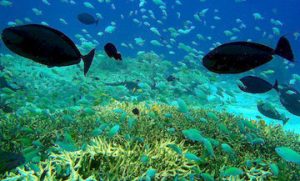
Figure 1. Danajon Bank, a double barrier reef located off the northwest coast of Bohol, Philippines. (The Fisheries and Coastal Resource Management Interpretive Center (FCRMIC))
From these 391 interviews, information was systematically collected about the spatial history of the study area in six specific steps: personal history, fishing history, gear history, orienting fishers to the map, mapping fishing grounds, and fishing ground history. This approach combined historical experience and expertise to create multifaceted timelines and maps of local practices or environments, as shown in Figure 2. The study also established the evolution of fishing gear practices and further classification of them as destructive or non-destructive, relative to the time. For example, in 1960 this spatial dynamic approach was able to discern that hook-and-line fishing was the predominant fishing gear, used in about 10% of the study area. While at the same time, traps were less than 5% of the study area until the 1970s, when the gear became more prolific.
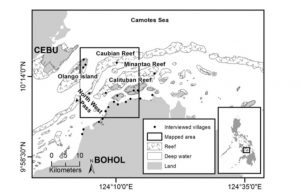
Figure 2. Along the Danajon Bank Ecosystem in the Philippines, residents were interviewed and asked to map the history of their fishing practices inside of a mapped area. (Selgrath, J. C., Gergel, S. E., and Vincent, A. C. J. 2017)
The multifaceted participatory mapping of the area over the past fifty years showed in great detail how small-scale fisheries have changed drastically. The study demonstrates how spatial dynamics and historical maps can lead to better-informed policies in data-poor systems (Selgrath, J. C., et al., 2017). A supporting study stated while “scaling up management interventions can make both biological and institutional sense, there is a point at which institutional capacity is exceeded.” (Christie, Pollnac, Oracion, Sabonsolin, Diaz, & Pietri, 2009). The need to immediate policy implementation is important, but deeper evaluations and historical mapping prior can help create a stronger framework of conservatory policy.
Moving forward, more research is needed to analyze the importance of historical mapping and to better understand a fishery’s status. “The match between the spatial range of the ecosystem and the governance system is the most important consideration and will play an important role in scaling up of fisheries management initiatives.” (Armada, White, et. al 2009). A collaborative method among small-scale fisheries and larger industrial industries should be established in order to optimize an accurate estimate of long term fishing efforts on the global scale; gathering knowledge from a more personal level to better understand the broader impacts.
Works Cited
Armada, N., White, A. T., Christie, P., & Global Marine Time, T. N. (2009, April 17). Managing Fisheries Resources in Danajon Bank, Bohol, Philippines: An Ecosystem-Based Approach. Coastal Management , 308-330.
Anticamara, J. A., Watson, R., Gelchu, A., and Pauly, D. 2011. Global fishing effort (1950–2010): trends, gaps, and implications. Fisheries Research, 107: 131–136. Elsevier B.V.
FAO. 2015. Voluntary guidelines for securing sustainable small-scale fisheries in the context of food security and poverty eradication. FAO, Rome.
Christie, P., Pollnac, R. B., Oracion, E. G., Sabonsolin, A., Diaz, R., & Pietri, D. (2009, April 17). Back to Basics: An Empirical Study Demonstrating the Importance of Local-Level Dynamics for the Success of Tropical Marine Ecosystem-Based Management. Coastal Management , 349-373.
Selgrath, J. C., Gergel, S. E., and Vincent, A. C. J. 2017. Incorporating spatial dynamics greatly increases estimates of long-term fishing effort: a participatory mapping approach. – ICES Journal of Marine Science, doi:10.1093/icesjms/fsx108.
The Fisheries and Coastal Resource Management Interpretive Center (FCRMIC). (n.d.). Danajon Bank. Philippines.
